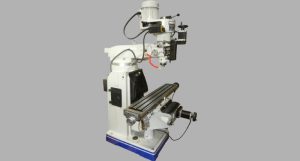From the moment humans first learned to grind metal with stones, metalworking techniques have been evolving to help us tackle new challenges, from early bronze jewelry to increasingly complex iron weapons. Those early craftsmen, sweating by the furnace as they hammered out rough iron sheets, may not have realized they were laying the foundation for modern technological marvels. With the arrival of the Industrial Revolution,types of metal processing transformed like never before, shifting from handcrafts to large-scale industrial production.
The diverse field of metalworking offers a range of techniques that meet various industrial needs, each with unique applications and benefits. The six most common types of metal processing include cutting, casting, forging, forming, welding, and surface treatment . Cutting removes material to achieve precise shapes; casting involves pouring molten metal into molds to form complex geometries; forging shapes metal under heat and pressure to increase strength; forming alters metal’s appearance under pressure without removing material; welding joins metal parts firmly using heat or pressure; and powder metallurgy compresses metal powders and heats them to create high-strength components.
Today, metal processing types like cutting, forging, casting, forming, welding, and surface treatment not only bring the roar of machinery to factories but also form the cornerstone of modern life. This article will explore the core aspects of metal forming processing with you.
There are many types of metal processing, each suitable for specific types of parts and shapes. Here are some common types of metal processing:
Types of metal processing:Cutting Processing
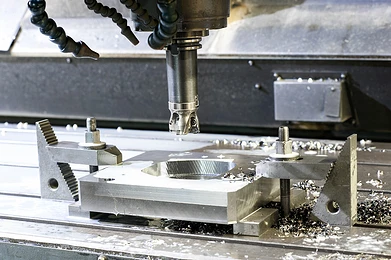
Cutting processing stands as one of the essential techniques in modern manufacturing. This process transforms materials into parts that meet design specifications through precise machining. Understanding the basic principles, process types, applications, tool materials, and the advantages and challenges of cutting helps us appreciate this manufacturing technology’s significance in modern industry.
What is Cutting Processing?
Cutting processing involves using cutting tools to mechanically shape materials by removing excess portions to meet design requirements. Typically performed on CNC or manual machines, it forms the foundation of precision manufacturing.
1. Types of Cutting Processes
Cutting processes include various methods, each with specific functions and applications. The main cutting methods are:
- Turning: Removes material through a rotating workpiece and fixed tool, often used for cylindrical or rotationally symmetrical shapes.
- Milling: Involves a rotating tool contacting a stationary workpiece, suitable for machining flat surfaces, grooves, and complex contours.

Milling Machine
- Drilling: Uses a rotating drill bit to create holes, essential for hole-making and hole-finishing operations.
- Grinding: Removes small amounts of material using abrasives, achieving precise dimensions and smooth surfaces.
- Boring: Enlarges or finishes existing holes in workpieces, enhancing hole precision and surface quality.
2. Applications of Cutting Processes
Cutting processes have widespread applications across various industries, including:
- Automotive Manufacturing: For producing engine parts, drive shafts, gears, and body components.
- Aerospace: For precision components in airplanes and rockets, such as turbine blades, engine casings, and structural parts.
- Mold Making: Plays a key role in shaping mold exteriors and cavities.
- Medical Devices: For creating surgical instruments and critical components in medical equipment, requiring high precision and smooth finishes.
3. Tool Materials for Cutting
Tool materials are crucial in cutting processes, directly influencing efficiency, accuracy, and surface quality. Common tool materials include:
- High-Speed Steel (HSS): Used for general cutting, known for its toughness and wear resistance.
- Carbide: Suitable for high-speed cutting with high hardness, capable of withstanding higher temperatures.
- Ceramic Tools: Ideal for machining ultra-hard materials with high wear resistance, though they are more brittle.
- Cubic Boron Nitride (CBN): Suitable for cutting high-hardness materials, such as hardened steel and hard cast iron.
- Diamond Tools: With extreme hardness and wear resistance, ideal for non-metal and non-ferrous metal machining.
4. Advantages of Cutting Processes
Cutting processes hold unique advantages in manufacturing, making them a critical and often irreplaceable technique:
- High Precision: Enables achieving very high dimensional accuracy and surface quality.
- Strong Flexibility: Can machine a wide range of shapes and materials, ideal for custom production.
- Wide Applicability: Suitable for both small-batch and large-scale production, with broad applications.
- Versatility in Materials: Cutting can be applied to nearly all materials, including metals, plastics, and wood.
5. Challenges of Cutting Processes
Despite the many advantages, cutting processes also come with challenges and limitations:
- Tool Wear: Tools can wear out during cutting, impacting accuracy and surface quality, necessitating regular replacement.
- High Processing Costs: Precision cutting often requires specialized machines and tools, leading to high initial investment costs.
- Limited Speed: Compared to chipless methods like injection molding and casting, cutting is slower, particularly in precision machining.
- Heat Management: Cutting generates significant heat, affecting accuracy and tool life, thus requiring cooling systems.
Types of metal processing:Metal Forming Processing
Metal forming processing is everywhere in modern manufacturing. Whether driving a car, using household appliances, or entering a building, metal forming techniques shape each detail of these products. This process doesn’t just carve metal blocks into desired shapes but instead applies pressure to deform the metal, creating new forms. This article explores the core aspects of metal forming, including process types, applications, advantages, and common challenges.
What is Metal Forming?
Metal forming, or metal shaping, uses external forces to plastically deform metal materials into desired shapes. Unlike cutting, metal forming achieves shape without removing material, instead relying on metal’s malleability. Depending on the material and process requirements, forming can occur at high temperatures or room temperature. It essentially “sculpts” metal efficiently, achieving ideal shapes without material loss.
1. Common Metal Forming Processes
Metal forming encompasses a wide range of techniques, each suitable for specific parts and shapes. Here are some common forming processes:
- Stamping: Stamping uses molds and presses to form sheet metal into specific shapes, ideal for automotive and electronic parts like car body panels and electronic housings. This process is efficient and well-suited for mass production, enabling multiple parts to be formed at once, significantly reducing production costs.
- Bending: Bending shapes sheet metal or profiles into different angles, often used for metal brackets and car door frames. It can occur at room temperature or with heating, with process parameters adjusted based on the material.

- Deep Drawing: Deep drawing stretches flat metal into open, container-like shapes. Metal beverage cans, for example, are made using deep drawing, ideal for producing deep cavities in parts like kitchenware, fuel tanks, and containers. This process requires substantial force but results in uniform, thin-walled shapes.
- Extrusion: Extrusion forces metal through a die opening to create long shapes with specific cross-sections, such as aluminum window frames and pipes. It can occur at room temperature (cold extrusion) or with heating (hot extrusion), chosen based on the desired strength and surface quality. Extrusion applies not only to metals but also to plastics and other materials.
- Forging: Forging heats metal to high temperatures and applies pressure to shape it, an ideal process for high-strength parts. Components with high strength demands, like automotive gears and aerospace turbine blades, are often forged. Through hammering or pressing, forging densifies the metal’s internal structure, enhancing strength and durability.
2. Applications of Forming Processes
Metal forming processing spans multiple industries, with applications in areas such as:
- Automotive Manufacturing: Nearly all automotive parts, including body panels, brackets, and frames, are produced using forming processes like stamping and bending.
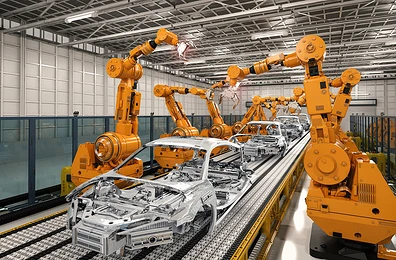
- Construction: Structural components like steel beams, brackets, railings, doors, and windows rely on forming processing.
- Consumer Electronics: From smartphone cases to laptop frames, forming techniques provide durable, lightweight metal enclosures for modern electronics.
- Household Appliances: Metal forming is commonly used to manufacture kitchenware, such as pots, pans, and metal utensils.
3. Advantages of Metal Forming
Metal forming processes are popular due to their many advantages:
- High Material Utilization: Forming changes the shape of metal without generating excess waste, unlike cutting processes.
- High Production Efficiency: Many forming processes, like stamping, are ideal for large-scale production, rapidly producing significant quantities of parts.
- Capability for Complex Shapes: Forming can create intricate shapes that are difficult to achieve with other processes.
- Optimized Material Properties: Forming typically densifies the internal grain structure of metals, improving material strength and toughness.
4. Challenges of Forming Processes
Metal forming also presents certain challenges that require careful design and optimization to overcome:
- High Mold Costs: Forming processes involve substantial mold costs, especially in precision manufacturing, making this investment less feasible for small production runs.
- Process Limitations: Forming is best suited for materials with good plasticity, as certain high-hardness materials may not be formable.
- Equipment Requirements: Forming often requires high-tonnage presses or other large machinery, leading to significant initial investments.
Types of metal processing:Casting
“Casting, as both an ancient and vital manufacturing process, continues to hold an irreplaceable role in modern industry because of its unique advantages and broad applications. Furthermore, understanding the basics and applications of casting not only helps professionals advance their research and practice in this field, but it also opens a window for many to explore the world of metal processing.”
What is Casting?
Casting is a manufacturing process that involves heating metal to a molten state, pouring it into a prepared mold, and allowing it to cool, forming the desired shape. This process is widely used in industrial production, particularly for creating complex shapes and enabling large-scale production.
1. Process Involved:
- Mold Preparation: Create the casting mold based on design requirements, using sand, metal, or other materials.
- Metal Melting: Heat the metal to its melting point, typically in a high-temperature furnace.
- Pouring: Pour molten metal into the mold, ensuring it fills all parts of the mold completely.
- Cooling: Allow the metal to cool and solidify in the mold, taking on the desired shape.
- Casting Removal: Disassemble the mold, retrieve the cooled casting, and perform any necessary post-processing, such as grinding and deburring.
2. Types of Casting:
- Sand Casting: Uses sand as the mold material, suitable for small-batch production and complex shapes.
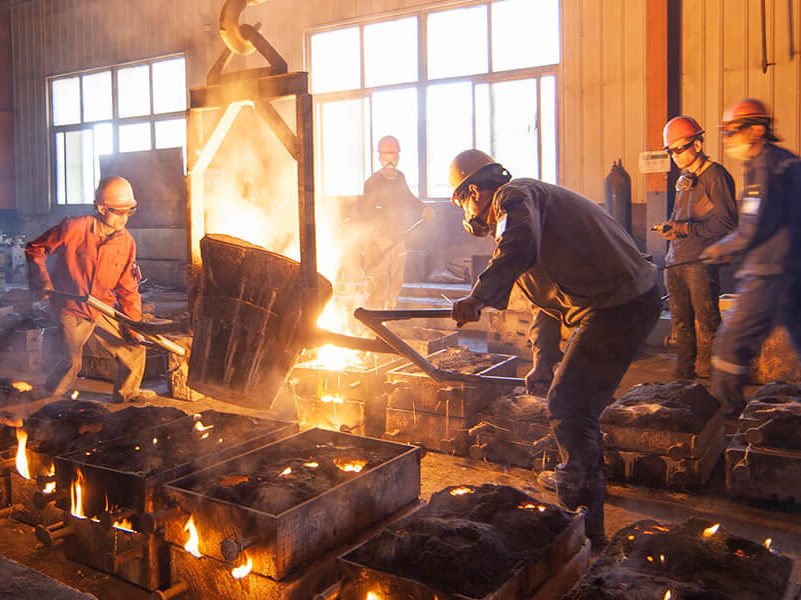
- Metal Casting: Employs metal molds, ideal for large-scale production, offering higher precision and surface quality.
- Die Casting: Injects molten metal into a mold under high pressure, often used for aluminum and magnesium alloys.
- Investment Casting: Creates high-precision castings using wax or polymer molds, widely applied in aerospace and medical device manufacturing.
3. Applications of Casting:
Casting plays a crucial role across various industries, including:
- Automotive Manufacturing: For engine blocks, transmission housings, and other critical components.
- Construction Engineering: For structural parts like reinforcing bars, columns, and connectors.
- Machinery Manufacturing: For parts like gears, bearings, and pump housings.
- Art and Sculpture: For casting artworks and monuments.
4. Advantages of Casting
Casting is highly valued as a core manufacturing process for its efficiency and flexibility, along with several other notable benefits:
- Complex Shapes: Enables the creation of intricate geometries, meeting diverse design requirements.
- Large-Scale Production: Supports mass production, reducing unit costs.
- High Material Utilization: Uses raw materials efficiently, minimizing waste.
- Variety of Material Choices: Allows casting of various metals like cast iron, aluminum alloys, and copper alloys, meeting different performance needs.
5. Challenges of Casting
Despite its many advantages, casting faces certain challenges:
- Mold Costs: High-quality molds involve significant costs, impacting initial investment.
- Casting Defects: Issues such as porosity, cracks, and inclusions can arise, affecting casting quality.
- Post-Processing Needs: Castings typically require post-processing to improve surface quality and dimensional accuracy.
6. Future of Casting
With ongoing technological advancements, the casting industry continues to innovate. For example, 3D printing is transforming mold manufacturing, making casting more flexible and efficient. Additionally, green casting technologies are aiming to reduce energy consumption and environmental impact throughout the casting process.
Types of metal processing :Welding
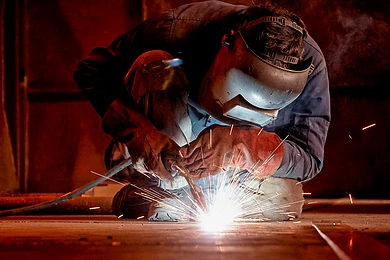
It is a process that joins workpieces by heating or applying pressure, allowing their surfaces to reach a molten or plastic state to form a joint. Welding enables the connection of metal parts, whether made of the same or different materials, creating strong bonds. Common welding tools include welding machines, electrodes, welding wire, and shielding gases.
What is Welding?
Welding joins different or similar metal parts by heating or applying pressure, thereby forming a solid bond between them. Additionally, welding typically involves tools such as welding machines, electrodes, filler wire, and shielding gas to efficiently facilitate the process.”
1. Types of Welding
This offers numerous methods, each suited for specific applications. The main types include:
- Arc Welding:
- Manual Arc Welding: The most traditional method, using arc heat to melt both the electrode and the workpiece.
- MIG Welding (Gas Metal Arc Welding): Employs continuous wire feeding with shielding gas, ideal for large areas.
- TIG Welding (Tungsten Inert Gas Welding): Uses a tungsten electrode and shielding gas for high-quality welds, suitable for stainless steel and aluminum.
- Resistance Welding:
- Generates heat through electrical resistance at contact points to join metal, commonly used for thin sheets and small metal parts like spot welding in the automotive industry.
- Gas Welding:
- Heats and melts materials using a flame produced by burning oxygen and acetylene, ideal for repair work and small welding tasks.
- Laser Welding:
- Uses a laser beam as the heat source, providing high-energy density for precise welding, widely used in microelectronics and medical device fabrication.
- Friction Welding:
- Generates heat through relative motion between materials to achieve plasticity, then applies pressure to create a joint, often used for joining similar or dissimilar metals.
2. Applications of Welding
Welding plays a vital role in almost every industrial field, including:
- Automotive Manufacturing: For building car bodies and chassis, providing strength and durability to vehicles.
- Construction: For welding steel structures, ensuring building safety and stability.
- Aerospace: For manufacturing aircraft and rocket frames and components, requiring high strength and fatigue resistance.
- Shipbuilding: Essential for constructing and repairing hulls and ship components.
- Petrochemical Industry: For joining pipelines and vessels, requiring high pressure and corrosion resistance in welded joints.
3. Advantages of Welding
Holds an essential place in modern industry due to its many advantages:
- High Bond Strength: Welded joints typically match or exceed the strength of the base material.
- Versatility: Welding methods suit various shapes, sizes, and materials.
- Broad Application: Welding can occur in various environments, including land, offshore, and underwater.
- Efficiency: Welding, especially automated and robotic welding, can significantly enhance production efficiency.
4. Challenges and Disadvantages of Welding
- Welding Defects: Cracks, porosity, and slag inclusions can occur, impacting weld quality.
- Health and Safety Risks: Welding operations produce fumes, radiation, and high temperatures, requiring safety measures to protect workers.
- Skill Requirements: Weld quality relies on operator skill, especially in precision welding.
- Equipment Costs: Certain welding methods, like laser welding and robotic systems, require specialized equipment with high initial investments.
5. Welding Safety Precautions
To ensure welding safety and quality, follow these guidelines:
- Personal Protective Equipment: Welders should wear safety glasses, welding helmets, gloves, and flame-resistant clothing.
- Ventilation and Fume Extraction: Remove harmful gases and smoke, maintaining good ventilation.
- Equipment Inspection: Check welding equipment before use to avoid electrical or mechanical issues.
- Site Cleanliness: Clear flammable materials from the welding area to reduce fire risks.
6. Future Trends in Welding
With ongoing technological advancements, welding continues to evolve. Notable trends in welding include:
- Automated Welding: Robotic welding technology is becoming more common, enhancing efficiency and reducing manual intervention.
- 3D Printing Integration: Combining metal 3D printing with welding creates new possibilities for complex part manufacturing.
- Smart Monitoring Systems: Real-time monitoring and feedback systems improve welding process stability and traceability.
- New Material Welding: As composite materials emerge, welding techniques for new materials are in development to meet future industry demands.
Types of metal processing:Forging
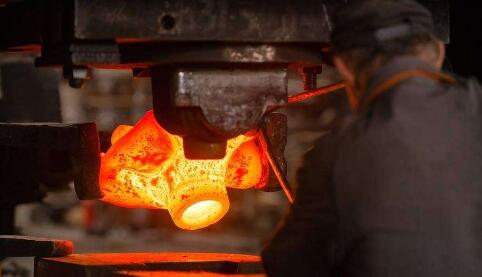
Though it may sound like an ancient technique, forging remains essential in modern manufacturing. From high-strength components in aircraft engines to everyday tools and equipment, forging plays a crucial role in countless products. But what exactly is forging? How does it transform raw metal into the familiar shapes and parts we rely on? Let’s explore the secrets of forging and gain insight into this timeless yet advanced process.
What is Forging?
In simple terms, forging is a process that shapes metal by heating it and applying pressure. Unlike cutting, which removes material, or casting, which pours molten metal into a mold, forging involves hammering and compressing heated metal to create desired shapes. The earliest forging dates back to the Iron Age when blacksmiths heated metal in furnaces and hammered it into tools. Today, forging has evolved into a high-strength industrial manufacturing technique.
1. Types of Forging
Advancements in technology have led to various forging methods, each suited to specific industrial needs:
- Hot Forging: Heats metal to high temperatures, making it more malleable for shaping. This increased ductility at high temperatures allows for more complex shapes, commonly used in producing automotive parts and aerospace components.
- Cold Forging: Operates at room temperature or slightly below, ideal for parts requiring precise dimensions and smooth surfaces, like bolts and nuts. Cold forging retains higher hardness and strength in the metal.
- Warm Forging: Occurs at moderate temperatures, between hot and cold forging. It’s suitable for parts that need a balance of precision and ductility.
2. Applications of Forging
Forging’s ability to produce extremely strong components makes it valuable across various industries. It supports manufacturing in sectors like automotive, aerospace, heavy machinery, and construction by producing high-strength, wear-resistant, and corrosion-resistant parts. Some typical applications include:
- Automotive Industry: Transmission shafts, gears, and connecting rods rely on forging for the durability and wear resistance needed to ensure vehicle safety and performance.
- Aerospace: Aircraft and rocket manufacturing use forging to produce structural parts and turbine blades that withstand high loads, meeting strict strength and durability standards in aviation.
- Tool Manufacturing: Forging enhances the hardness and durability of hand tools like wrenches, pliers, and hammers, making it an ideal process for quality tool production.
3. Advantages of Forging
Forging offers unmatched benefits compared to other manufacturing processes. It significantly increases metal strength and toughness, as the heating and compressing process tightens the metal’s grain structure. Forged parts often possess higher strength and fatigue resistance. Additionally, forging allows for complex shapes, effectively improving material utilization and making it cost-efficient for large-scale production.
4.Challenges of Forging
Despite its advantages, forging faces several challenges. First, mold costs are high. Forging molds must withstand high temperatures and pressures, requiring substantial initial investment for design and production. Also, forging often operates in high-temperature environments, leading to high energy consumption and necessitating skilled personnel for operation and maintenance. Finally, forging certain high-hardness metals may require special treatments, as the process may face limitations with such materials.
Types of metal processing:Surface Treatment
In metal processing, surface treatment does more than enhance appearance; it improves corrosion resistance, hardness, and wear resistance. Surface treatment acts as a finishing touch, adding various properties to metal materials through different techniques, allowing them to adapt to diverse environmental demands.
1. What is Surface Treatment?
Surface treatment involves applying specific processes to metal surfaces to improve their physical, chemical, or aesthetic properties. Essentially, surface treatment functions as a “protective layer” or “fashionable attire” for metal, enhancing durability in different environments while making it more visually appealing. Whether on building materials, appliance casings, automotive parts, or electronic devices, surface treatment is crucial in providing these metal components with unique qualities.
2. Functions of Surface Treatment
Surface treatment serves multiple purposes, with each method offering distinct effects. Key functions include:
- Enhancing Corrosion Resistance: Metals exposed to air or water can corrode easily. Surface treatments create protective layers to prevent corrosion, extending the metal’s lifespan.
- Increasing Hardness and Wear Resistance: Certain surface treatments significantly enhance surface hardness and wear resistance, allowing metal to maintain integrity under high stress.
- Improving Conductivity or Insulation: Electroplating or coating can modify a metal’s conductivity to meet specific needs in electronics and electrical equipment.
- Aesthetic Appeal: Surface treatments can alter the appearance of metal, adding color, gloss, or texture for a more stylish and professional look.
3. Common Types of Surface Treatments
There are various surface treatment processes, each bestowing metal with unique characteristics. Some common types include:
- Electroplating: This process involves immersing metal in an electrolyte solution, using electric current to deposit another metal onto its surface, forming a plated layer. Electroplating enhances corrosion resistance and adds different colors and finishes, such as zinc, chrome, or nickel plating. The shiny faucets and phone cases you often see are likely electroplated.
- Anodizing: Primarily used for aluminum alloys, anodizing forms an oxide layer on the surface through electrolysis. This oxide layer increases corrosion resistance and allows for coloring, making aluminum alloys smoother and more visually appealing, commonly used for electronic device casings and decorative metal parts.
- Spraying: Spraying applies a coating of paint onto the metal surface through a spray gun, creating a thin protective film. Suitable for various materials and large metal surfaces, different coatings provide attributes such as wear resistance, corrosion resistance, and UV protection. Sprayed color layers also give metal a fresh, vibrant look.
- Polishing: Polishing uses mechanical friction to smooth and flatten the metal surface, resulting in a bright, attractive finish. Common for tableware, household items, and jewelry, polishing not only enhances visual appeal but also removes surface imperfections for a better tactile experience.
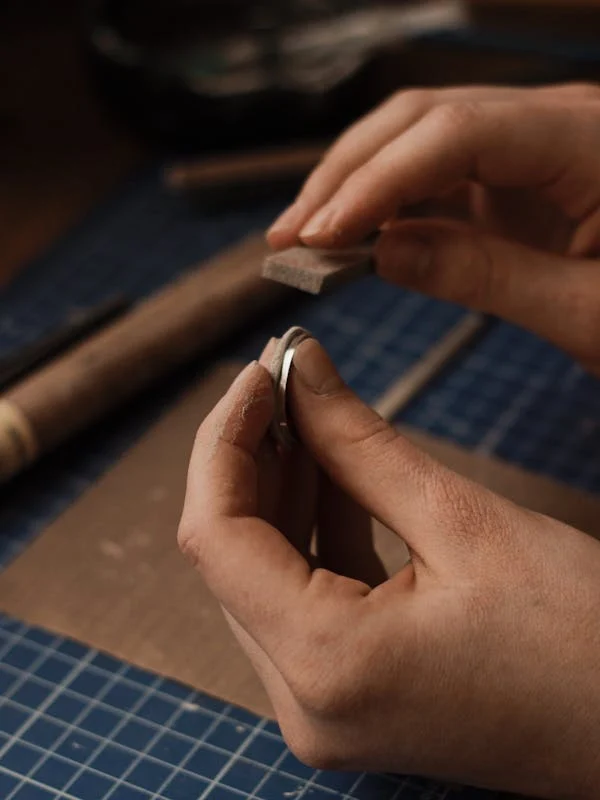
4. Real-World Applications of Surface Treatment
Surface treatment is virtually everywhere, giving everyday items durability and aesthetic appeal. For example:
- Automotive Industry: Electroplating and spraying prevent rust on car parts, while polishing enhances the look of car bodies and wheels.
- Building Materials: Metal components like doors, windows, and railings often undergo spraying to withstand outdoor weather and add color and texture.
- Electronics: Phone and laptop casings frequently use anodizing or electroplating for enhanced scratch resistance, durability, and refined appearance.
I hope this article helps you better understand the principles, applications, and future developments of metal forming. If you’re interested in specific processes, feel free to explore further!











